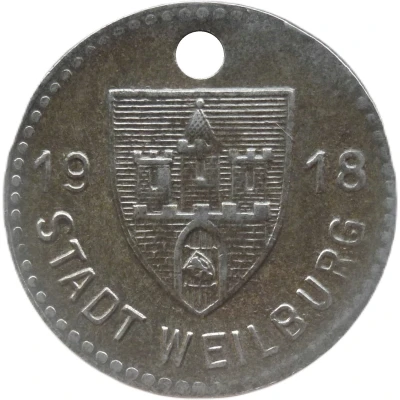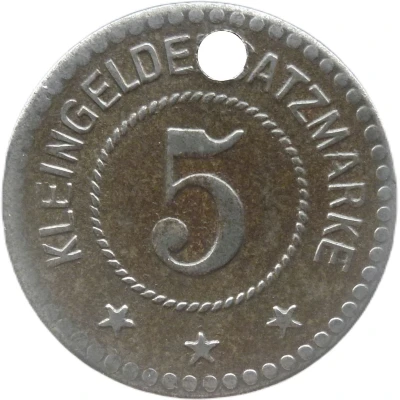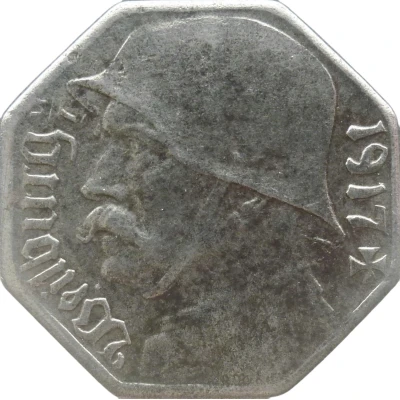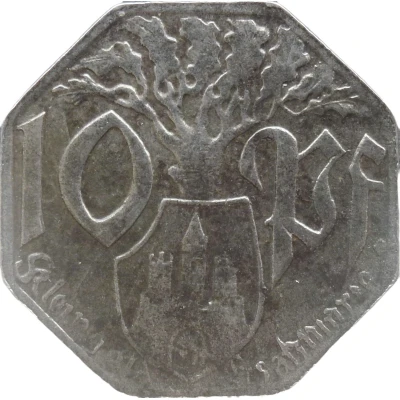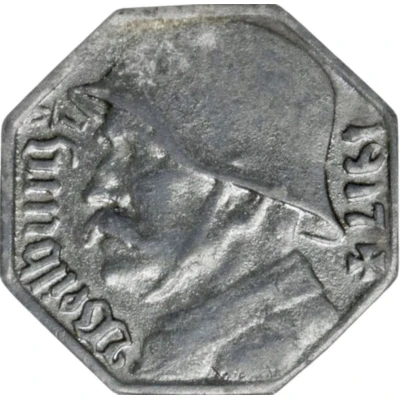
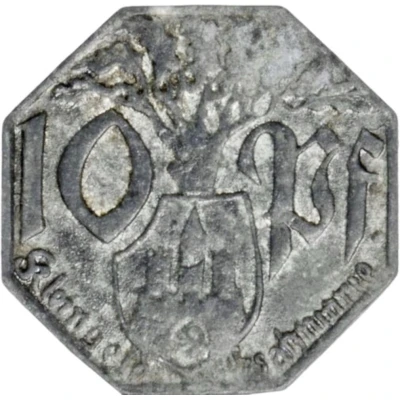

© Willem63 (CC BY-NC-SA)
10 Pfennigs - Weilburg an der Lahn
1917 year| Zinc | 2.2 g | 20.7 mm |
| Issuer | City of Weilburg (Prussian province of Hesse-Nassau) |
|---|---|
| Emperor | William II (Wilhelm II) (1888-1918) |
| Type | Standard circulation coin |
| Year | 1917 |
| Value | 10 Pfennigs (10 Pfennige) (0.10) |
| Currency | Mark (1914-1924) |
| Composition | Zinc |
| Weight | 2.2 g |
| Diameter | 20.7 mm |
| Thickness | 1.2 mm |
| Shape | Octagonal (8-sided) |
| Technique | Milled |
| Orientation | Medal alignment ↑↑ |
| Demonetized | Yes |
| Updated | 2024-10-04 |
| Numista | N#185560 |
|---|---|
| Rarity index | 91% |
Reverse
Legend at bottom corners, denomination divided by oak tree with Coat of Arm at bottom of tree.
Script: Latin (Fraktur blackletter)
Lettering:
10 Pf.
Kleingeld Ersatzmarke
Lettering (regular font):
10 Pf.
Kleingeld Ersatzmarke
Edge
Plain
Comment
Issuing body: [Stadt, Hessen-Nassau].Interesting fact
One interesting fact about the 10 Pfennigs - Weilburg an der Lahn 1917 coin is that it was minted during a time of economic and political turmoil in Germany. The country was facing severe inflation and the coin's low denomination and zinc composition were a result of the government's efforts to reduce the cost of production and maintain the value of the currency. Despite these efforts, the coin's purchasing power was still relatively low, and it was not uncommon for people to use higher denomination coins or banknotes for most transactions.
